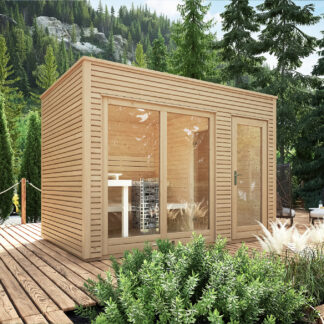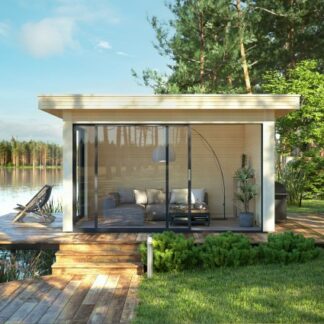The Irish housing crisis isn’t slowing down—and neither is the growing demand for faster, more affordable, and more sustainable ways to build. With planning delays, rising construction costs, and a shift in lifestyle since the pandemic, more people are looking for alternatives to traditional brick-and-mortar homes. Enter timber frame houses and log cabins, including innovative timber frame homes Ireland.
Timber frame homes Ireland are an innovative solution that meets the needs of modern living.
Among these options, timber frame homes Ireland stand out for their energy efficiency and sustainable building practices.
The increasing desire for more sustainable living solutions has led to a significant rise in the interest towards timber-frame homes and log cabins, particularly in the context of timber frame homes Ireland. This trend is not merely about aesthetics; it reflects a broader shift in societal values towards environmental responsibility and quality of life. For many, these homes represent a way to reconnect with nature, reduce their carbon footprint, and enjoy a more harmonious lifestyle.
With the introduction of eco-friendly building practices and materials, homeowners are increasingly prioritising sustainability. This has led to innovations in timber sourcing and construction methods, making timber-frame houses and log cabins not only appealing but also responsible choices for modern living.
As more people seek to live sustainably, timber frame homes Ireland are increasingly becoming a popular choice.
From government incentives to lifestyle changes, there’s a noticeable shift happening in 2025—and it’s worth paying attention to.
This trend includes a growing focus on timber frame homes Ireland that incorporate local materials and craftsmanship.
Timber frame homes Ireland are becoming a cornerstone of modern housing solutions, meeting both aesthetic and environmental needs.
Timber frame homes Ireland benefit from the sustainable management of local timber resources.
The government’s commitment to timber construction aligns with global trends in sustainable building. Countries like Sweden and Finland have long embraced wood as a primary building material, and Ireland is following suit, aiming to harness its own plentiful resources. This not only supports the economy but also signals a shift in how we perceive construction materials.
1. Timber is Taking Centre Stage
These homes often feature designs that maximise natural light, making timber frame homes Ireland bright and airy.
Discover the Benefits of Timber Frame Homes Ireland
Ireland’s government is now openly backing timber construction. Under the new “Wood First” policy, public buildings—including schools, housing projects, and libraries—are being built with homegrown Irish timber. This move supports local jobs, lowers carbon emissions, and speeds up delivery times for new homes.
Even Forestry Minister Micheál Healy-Rae has said that Ireland’s forests can meet this rising demand while supporting rural communities.
The growing acceptance of timber frame builds can also be attributed to advancements in engineering and construction techniques. Modern timber frames are designed to withstand the same stresses and strains as traditional brick-and-mortar homes, offering the same level of safety and durability while being quicker and less expensive to build.
This shift is not just about speed; it’s about creating homes that respond to the needs of contemporary living. For example, many timber frame homes are being designed with open-plan layouts that foster a sense of community and connection among family members. Features such as large windows are also popular, allowing natural light to flood the interior and reduce reliance on artificial lighting.
2. Timber Frame Builds Are on the Rise
Log cabins are not just limited to rural retreats; they are being embraced in suburban settings as well. Their versatility makes them suitable for various uses, such as home offices, artist studios, or even small rental properties. This multifunctionality appeals to homeowners looking to maximise their property’s potential without committing to larger, more expensive builds.
In addition to their affordability and quick installation, log cabins offer unique aesthetic benefits that resonate with many homeowners. The natural wood finish creates a warm and inviting atmosphere that is often associated with relaxation and comfort. For those seeking a retreat from the hustle and bustle of city life, a log cabin provides an ideal escape.
In 2023, nearly half of all scheme-built homes in Ireland used timber frame construction. Fast-forward to today, and it’s clear this method is becoming the norm, not the exception.
Why the switch? Timber frame homes can be built in half the time compared to traditional builds, are more energy efficient, and create less waste on site. Projects like the one in Clondalkin, South Dublin—where Coillte and the local council have teamed up—are already showing what’s possible when you go all in on timber.
3. Log Cabins Are the New Must-Have
Whether it’s a garden office, a rural escape, or a staycation-ready guest cabin, log cabins have exploded in popularity.
And it’s not just a trend in Ireland. Globally, the log cabin market is growing at over 6% a year and is expected to be worth more than $10 billion in 2025. People are choosing log cabins because they’re:
- Affordable
- Quick to install
- Naturally insulated
- Ideal for remote working or renting
With rising interest in remote working, timber frame homes Ireland provide flexible spaces for home offices.
We’re seeing more people use them as backyard additions, home studios, or even full-time homes in scenic parts of the country.
As regulations surrounding planning permission evolve, the barriers to building a log cabin or timber frame home are being lowered. This is particularly relevant for those looking to create spaces that accommodate home office needs or multi-generational living arrangements. By simplifying the process, more families can consider these options without the stress of navigating complex regulations.
As regulations evolve, timber frame homes Ireland will likely see increased acceptance for various uses, including guest accommodations.
The appeal of timber frame homes Ireland is bolstered by their aesthetic versatility and energy efficiency.
4. Planning Permission: What’s Changing
For those seeking a sustainable lifestyle, timber frame homes Ireland make a compelling case in 2025.
There’s talk of relaxing planning regulations for cabins under 25–40 m², especially if they’re not used as a main residence. This could mean less paperwork and more freedom to build garden cabins, small homes, or granny flats.
For larger log cabins or timber frame homes, planning permission is still required—but companies like Timber Living help with site plans, drawings, and everything in between, making the process much easier for homeowners.
5. What This Means for You
Whether you’re looking for your first home, an extra space to rent out, or a peaceful weekend escape—timber living makes sense in 2025.
With a focus on sustainability and modern aesthetics, timber frame homes Ireland continue to attract attention.
Exploring timber frame homes Ireland opens up a world of sustainable living options that are both stylish and practical.
It’s:
Every design choice for timber frame homes Ireland can enhance the connection with the surrounding environment.
Each timber frame homes Ireland offers unique opportunities for creativity and personal expression.
Discovering options for timber frame homes Ireland can lead to exciting possibilities in home design.
- Faster to build
- Better for the environment
- More affordable than traditional options
Timber frame homes Ireland present a chance to create a lifestyle that is in harmony with nature.
The growing popularity of timber living also reflects a shift in consumer priorities. Today’s buyers are more informed and value sustainability, affordability, and the ability to customise their living spaces. This has led to a surge in companies offering bespoke solutions tailored to individual needs and preferences, further enhancing the appeal of timber homes.
At Timber Living, we’ve been building log cabins for over 25 years. And today, more than ever, we’re seeing a growing number of people turn to timber as a smart, stylish and sustainable solution.
Exploring the possibilities of timber living can also involve considering different styles and designs. From contemporary minimalist aesthetics to rustic traditional looks, there is a variety of options available to suit every taste. The flexibility in design means that homeowners can create a space that truly reflects their personality and lifestyle needs.
Ready to explore the possibilities?
Come meet Valerie and Fergus in our Tullow showroom, open Monday to Saturday, and see for yourself why so many people are making the switch.
Read more: Why Timber‑Frame Homes & Log Cabins Are Booming in Ireland in 2025




Recent Comments